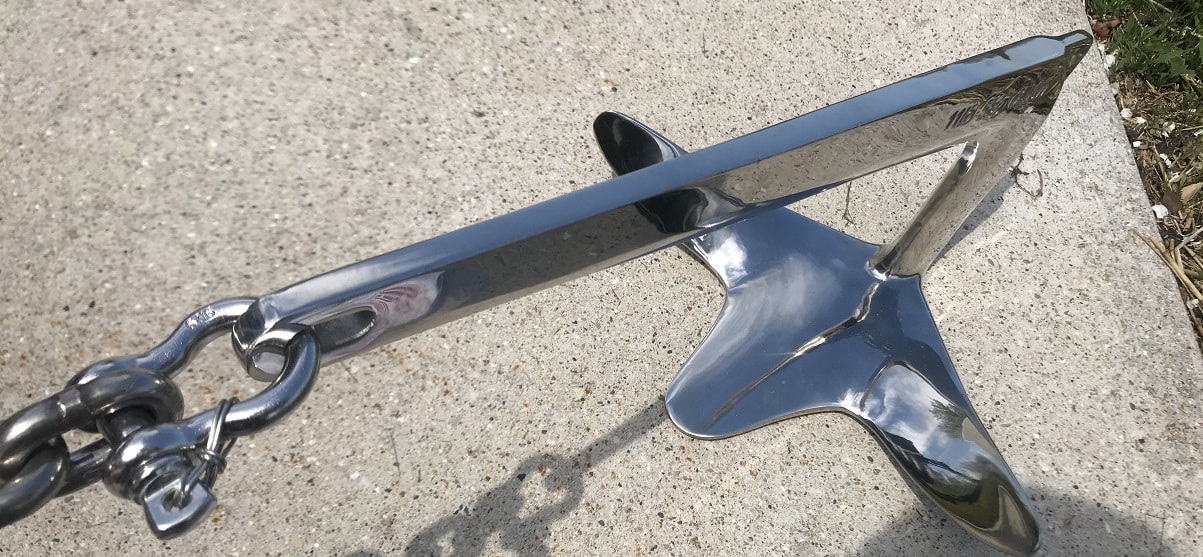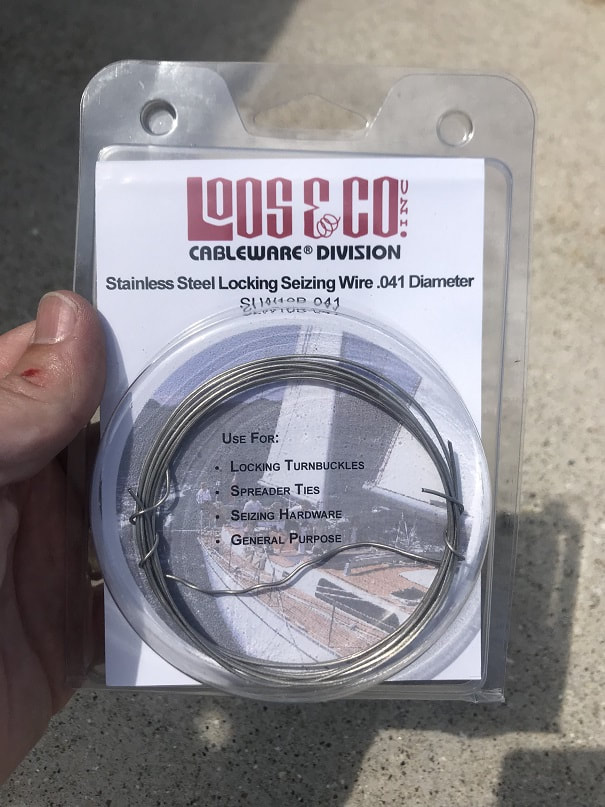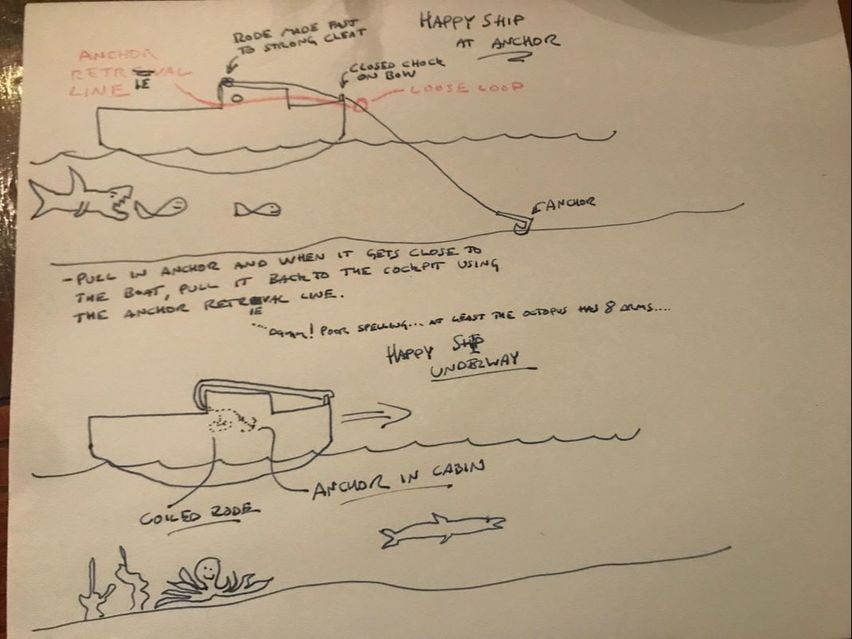photo above: Sunrise, Washington Harbor, Washington Island, Wisconsin, Lake Michigan, after a bouncy night at anchor aboard the Compac 16 Lillyanna.
And here, the Anchors and Rodes of the SCAMP "Argo":
- Primary Anchor: 11lb Stainless Steel Lewmar Bruce Anchor on 6 Feet of 3/8" Stainless Chain, 5/16" stainless steel anchor shackles, and 200 feet of 1/2" Nylon Rode
- Secondary Anchor: Fortress F-7 Danforth on 150 feet of 3/8" Nylon Rode
There are times when you throw the hook (fishy word for an anchor) overboard to cast a line for thirty minutes on a calm inland lake. There are also times when your own decisions and turns of events outside your control land you in unfavorable anchorages where high winds lash your boat, and your anchor is keeping you precariously off a lee shore. I myself do not put much stock in anchor recommendations based on boat length. I cannot quite believe that the small anchors that are recommended for big boats would actually hold that boat in a strong wind. The anchors for the Argo are oversized as far as manufacturers recommendations go, and I am A-OK with that. There are myriad aspects to anchoring, from bottom structure, to wave amplitude and frequency and length, to scope of the rode, to type of anchor , to weight of anchor, to windage of boat, and so on. Different anchors are required for having lunch or fishing, versus requiring your anchor to hold you in a bit of a blow. The SCAMP being a dinghy, my anchor choices are overkill for many situations, but I am very happy with my choices in light of the multi-day trips I do on the upper Great Lakes. For inland lake day-sailing, a smaller anchor would suffice.
"Mousing" a shackle, means to bind the pin to the shackle to prevent the pin from working out of the shackle. I have seen wire and also nylon zip-ties used for this. I used the stainless wire shown in photos here.
...and now for some potentially boring text that may be read diligently by rare folks that are interested....
- It is good when anchoring, to have the anchor rode fixed to the center bow of the boat. The boat is likely designed to take on waves directly on the bow, and if anchored from the bow you will be taking waves mostly on the bow.
- The SCAMP is not designed for one to walk up on the foredeck at the bow and retrieve the anchor....the deck is too small. One can walk up there, but not reasonably.
- So, one could set an anchor off the side of the boat, amidships.......which would result in the anchor pulling the boat broadside into the waves and wind.....or...
- One could set the anchor over the side amidships, but then reach up and set the anchor rode into an open chock at the bow and then the rode would pull perfect.......but what if while you are sleeping, wily seas toss the rode out of the open chock at the bow? I like this open-bow-chock system, and it probably works 99% of the time, but I would be a bad sleeper worrying about the anchor line popping out of that chock....so, I used a closed-chock at the bow.








